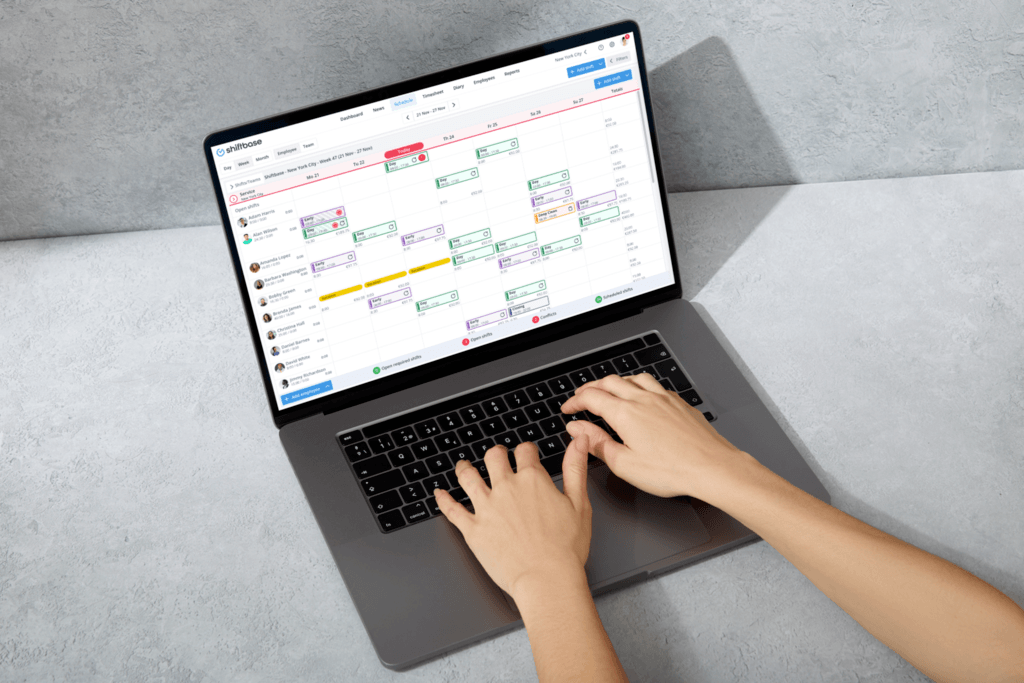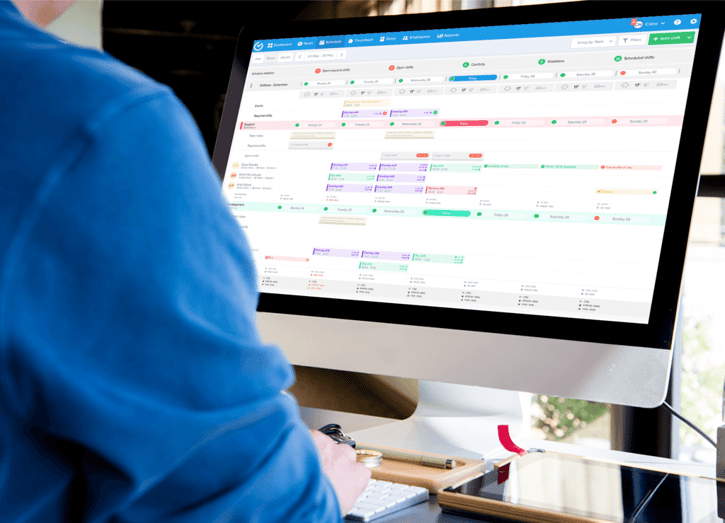In this detailed guide, we'll delve into the essence of workforce forecasting, elucidating its purpose, importance, and primary elements.
What is workforce forecasting?
Workforce forecasting is the process of using historical data, internal and external factors, and predictive analytics to project an organization's future staffing requirements.
This proactive approach to workforce planning not only helps businesses anticipate their future labor needs but also enables them to tailor their strategies for effective gap-closing and sustainable growth.
The significance of accurate workforce predictions cannot be overstated, as they form the backbone of strategic workforce planning, effective human resource allocation, and overall business success.
The need for workforce forecasting
1. Strategic resource alignment
Workforce forecasting helps organizations align their human resources with their strategic goals. By accurately predicting future workforce needs, businesses can proactively allocate resources, ensuring the right talent is available to drive growth, innovation, and successful execution of business plans.
2. Effective gap-closing strategy
Anticipating workforce gaps before they occur is crucial for seamless operations. Workforce forecasting allows companies to identify skill shortages, succession planning needs, and potential turnover trends.
Armed with this information, organizations can implement targeted recruitment, training, and retention strategies, avoiding disruptions and maintaining productivity.
Useful Read: How Skills-Based Hiring is Redefining Recruitment
3. Optimized financial planning
The workforce is one of the most significant expenses for businesses. Accurate workforce forecasting provides a clear picture of future labor costs, aiding in budgeting and financial planning.
Organizations can allocate resources efficiently, avoid unnecessary expenditures, and invest strategically in areas where talent is most needed.
4. Responsive adaptation to change
The business landscape is dynamic, with market trends, technological advancements, and economic shifts driving constant change. Workforce forecasting equips businesses to adapt swiftly.
Whether it's scaling up for sudden growth opportunities or downsizing during economic downturns, accurate predictions enable organizations to stay agile and maintain operational resilience.
5. Enhanced employee engagement:
An organization's workforce is at the heart of its success. Forecasting helps understand workforce trends, employee turnover rates, and engagement levels. By addressing issues related to work-life balance, career progression, and skill development proactively, businesses can boost employee satisfaction and retention, creating a positive work environment.
Useful Read: 6 Metrics to Measure Employee Engagement: The Employers Guide
In essence, workforce forecasting isn't just a tool; it's a strategic necessity that empowers businesses to navigate the complexities of today's dynamic environment. By anticipating future workforce needs, organizations can build a resilient and adaptable workforce that not only meets current challenges but also positions them for success in the future.
Key components of workforce forecasting

1. Historical data analysis
Analyzing past workforce trends serves as the foundation of effective workforce forecasting. By delving into historical data, businesses gain insights into their previous staffing patterns, seasonal fluctuations, and trends.
This analysis empowers organizations to identify recurring patterns and anomalies, enabling them to create more accurate forecasts for future needs. The three most crucial insights to extract from historical workforce data are:
-
Seasonal patterns: Understanding the cyclic nature of workforce demand based on historical data equips businesses to proactively allocate resources during peak periods and scale down during lulls, optimizing operational efficiency.
-
Skills gap identification: Historical workforce data offers insights into existing skill shortages that hindered business processes in the past. Armed with this information, companies can strategize to bridge these gaps, whether through training, recruitment, or reassignment.
-
Employee turnover trends: Analyzing historical turnover rates provides a clear understanding of retention challenges, allowing organizations to address underlying issues, improve employee engagement, and reduce the costs associated with frequent turnover.
3. External factors consideration
-
Economic trends: Economic shifts have a profound impact on workforce planning. By considering economic indicators and trends, such as GDP growth and unemployment rates, businesses can adapt their workforce strategies to navigate periods of economic expansion or contraction.
-
Industry-specific factors: Every industry has unique demands and challenges. Workforce forecasting requires a thorough understanding of industry-specific factors like technological advancements, regulatory changes, and market trends that can directly affect workforce needs.
-
Technological advancements: The rapid pace of technological evolution can disrupt industries and reshape workforce requirements. Organizations that embrace emerging technologies can capitalize on their advantages, whereas those that lag behind risk being left with skill gaps and outdated workforce structures.
4. Internal factors consideration
-
Organizational growth goals: Workforce planning must align with an organization's growth trajectory. Whether expanding into new markets, diversifying product lines, or aiming for innovation, workforce forecasting helps ensure the availability of the right talent to support these goals.
-
Projected changes in business operations: As companies evolve, so do their operational needs. Workforce forecasting takes into account upcoming changes in business processes, allowing companies to proactively adjust their staffing plans to meet the evolving demands.
-
Employee turnover rates: Employee turnover can disrupt productivity and hinder growth. By predicting turnover rates and identifying reasons behind attrition, organizations can implement retention strategies, nurturing a stable and engaged workforce.
Tools and techniques for workforce forecasting

In the intricate dance of workforce planning, accurate predictions are a key to choreographing success. To achieve this, organizations employ a myriad of tools and techniques that blend art with science, harnessing data and human insights to anticipate future workforce needs.
This section will dive into the arsenal of methods available, ranging from quantitative to qualitative approaches and even a fusion of both, all aimed at illuminating the path forward in the complex realm of workforce forecasting.
1. Quantitative methods
-
Trend analysis: This method involves scrutinizing historical workforce data to identify patterns and trends. By analyzing past employment figures, employee demographics, and turnover rates, organizations can detect consistent growth or decline patterns. These insights form the backbone of informed decision-making in the workforce planning process.
-
Regression analysis: Regression analysis delves deeper, seeking to uncover relationships between variables that impact workforce needs. By examining how factors like company growth, financial performance, and customer demand correlate with workforce deployment, regression analysis provides a quantitative foundation for understanding how various elements interplay.
-
Time Series models: Time series models take forecasting a step further by considering the sequential nature of data. These models analyze historical data points over time, enabling organizations to identify cyclical patterns, and seasonality, and even account for irregular events that may impact future staffing requirements.
2. Qualitative methods
-
Expert opinions and Delphi method: Human expertise plays a vital role in workforce forecasting. Expert opinions gathered from senior leaders, managers, and subject matter experts offer qualitative insights that quantitative data might miss. The Delphi Method, a structured expert consultation process, refines these opinions into cohesive forecasts.
-
Scenario planning: The future is riddled with uncertainties, making scenario planning a valuable tool. By crafting multiple future scenarios based on different assumptions, organizations can visualize a range of potential workforce needs. This prepares them to adapt swiftly, regardless of which scenario unfolds.
-
Simulation and sensitivity analysis: Simulation techniques allow organizations to model workforce scenarios and assess the impact of different variables. Sensitivity analysis takes it a step further, testing how changes in variables—such as turnover rates or business expansion—ripple through the future forecast.
3. Hybrid approaches
Blending the precision of quantitative data with the nuance of qualitative insights creates a powerful fusion that refines workforce forecasts.
-
Demand-driven hybrid: Retail companies often combine historical sales data (quantitative) with insights from sales and store managers (qualitative). This hybrid approach enables them to anticipate staffing needs based on upcoming promotions or changes in customer behavior.
-
Technology-infused hybrid: In the tech industry, a blend of trend analysis (quantitative) and expert opinions from tech leaders (qualitative) informs workforce planning. This ensures that emerging technologies and skill requirements are accurately reflected in future hiring plans.
-
Market expansion hybrid: Companies aiming to enter new markets might combine scenario planning (qualitative) with regression analysis of past market entries (quantitative). This hybrid approach assists in gauging potential workforce gaps and devising an effective gap-closing strategy.
By harnessing a mix of quantitative, qualitative, and hybrid methods, organizations propel their workforce forecasting beyond mere prediction, using it as a compass to steer the company forward.

Employee scheduling and Time-tracking software!
Conclusion
In the intricate world of business, workforce forecasting emerges as a beacon of strategic prowess. Blending data, insights, and diverse methods propels organizations toward success. Workforce forecasting bridges gaps prepares for change and optimizes finances.
It's a dynamic journey of insight-driven planning and agile management. As businesses navigate uncertainty, workforce forecasting becomes their compass, turning challenges into opportunities. This practice isn't just about predicting; it's about actively shaping a thriving future.
Navigating the Future with Shiftbase
To successfully execute workforce forecasting, you need the right tools to gather and analyze data. Shiftbase offers an integrated solution, streamlining employee scheduling, time tracking, and absence management.
With a robust SaaS platform, you can gather crucial insights to align HR strategies with business goals. Elevate your forecasting and workforce management with actionable insights.
Ready to experience the next level of efficiency? Try Shiftbase for free for 14 days and transform your workforce planning.





